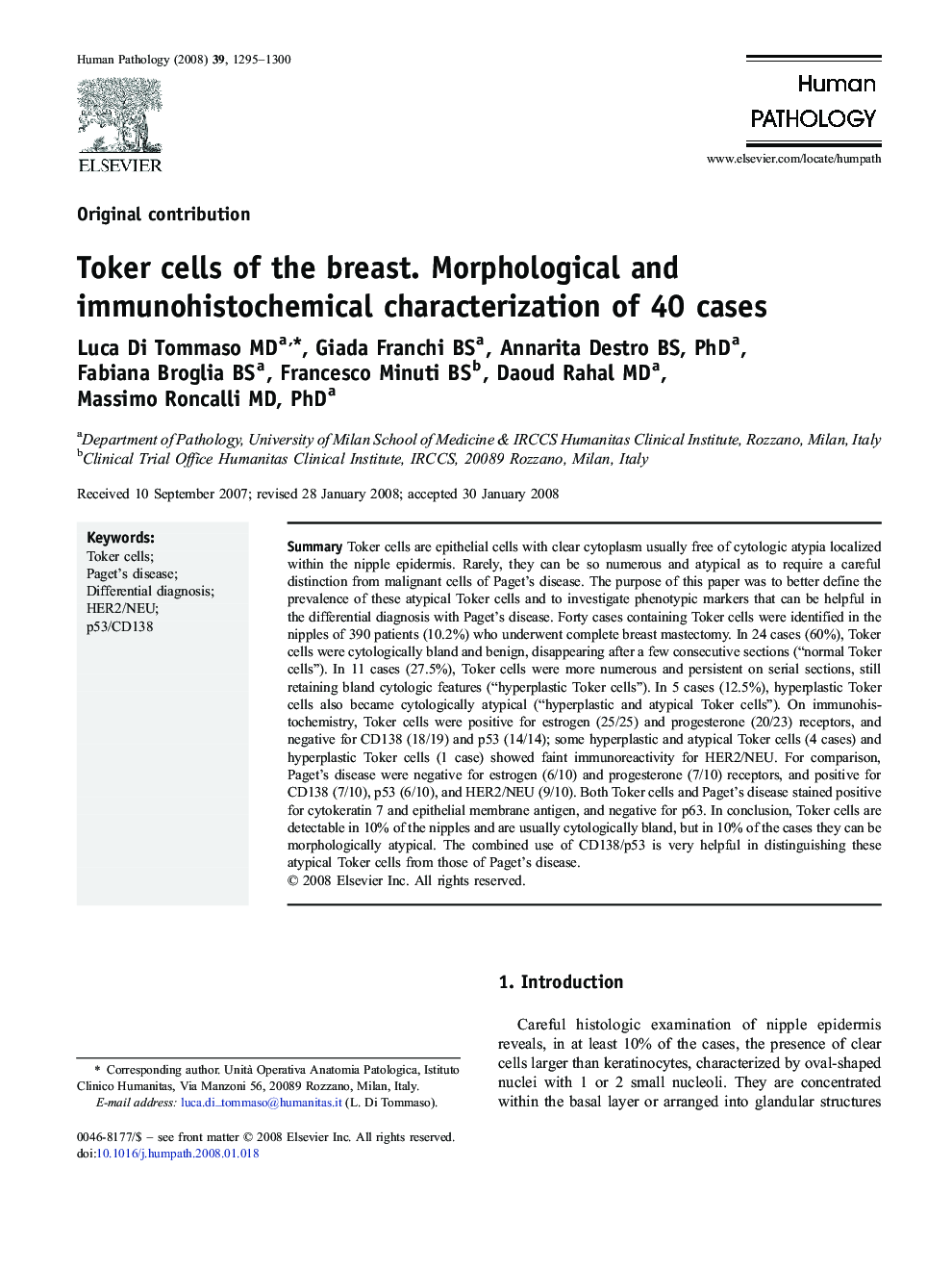| Article ID | Journal | Published Year | Pages | File Type |
|---|---|---|---|---|
| 4135292 | Human Pathology | 2008 | 6 Pages |
SummaryToker cells are epithelial cells with clear cytoplasm usually free of cytologic atypia localized within the nipple epidermis. Rarely, they can be so numerous and atypical as to require a careful distinction from malignant cells of Paget's disease. The purpose of this paper was to better define the prevalence of these atypical Toker cells and to investigate phenotypic markers that can be helpful in the differential diagnosis with Paget's disease. Forty cases containing Toker cells were identified in the nipples of 390 patients (10.2%) who underwent complete breast mastectomy. In 24 cases (60%), Toker cells were cytologically bland and benign, disappearing after a few consecutive sections (“normal Toker cells”). In 11 cases (27.5%), Toker cells were more numerous and persistent on serial sections, still retaining bland cytologic features (“hyperplastic Toker cells”). In 5 cases (12.5%), hyperplastic Toker cells also became cytologically atypical (“hyperplastic and atypical Toker cells”). On immunohistochemistry, Toker cells were positive for estrogen (25/25) and progesterone (20/23) receptors, and negative for CD138 (18/19) and p53 (14/14); some hyperplastic and atypical Toker cells (4 cases) and hyperplastic Toker cells (1 case) showed faint immunoreactivity for HER2/NEU. For comparison, Paget's disease were negative for estrogen (6/10) and progesterone (7/10) receptors, and positive for CD138 (7/10), p53 (6/10), and HER2/NEU (9/10). Both Toker cells and Paget's disease stained positive for cytokeratin 7 and epithelial membrane antigen, and negative for p63. In conclusion, Toker cells are detectable in 10% of the nipples and are usually cytologically bland, but in 10% of the cases they can be morphologically atypical. The combined use of CD138/p53 is very helpful in distinguishing these atypical Toker cells from those of Paget's disease.
